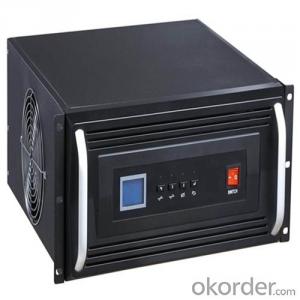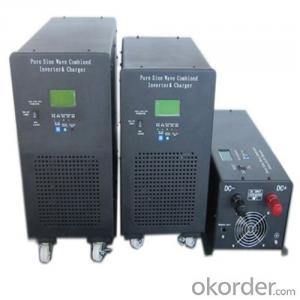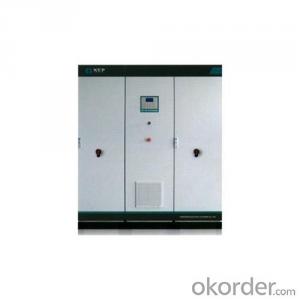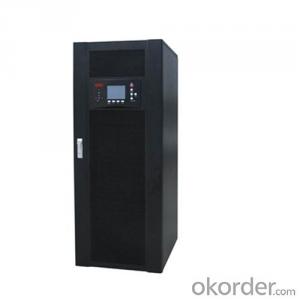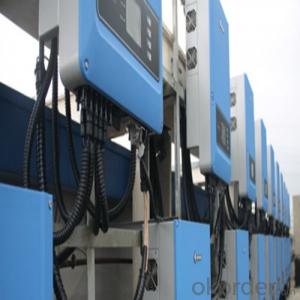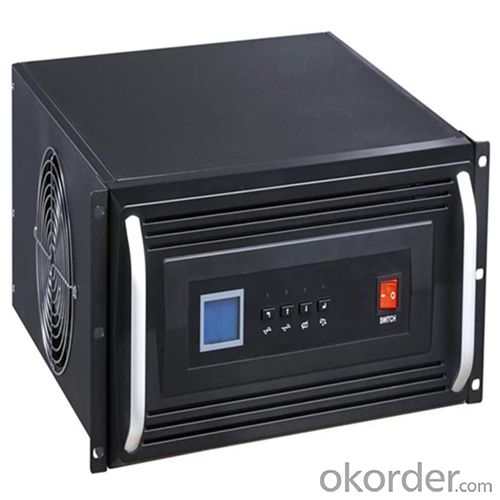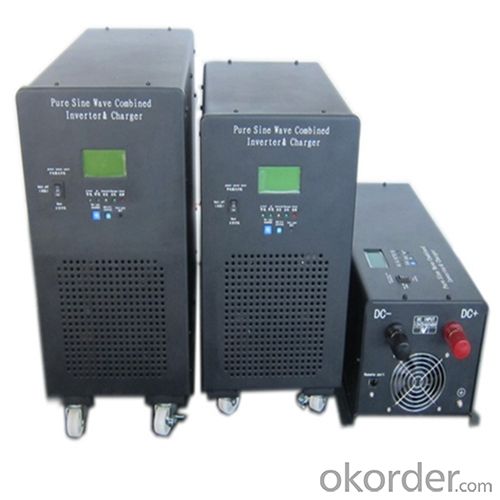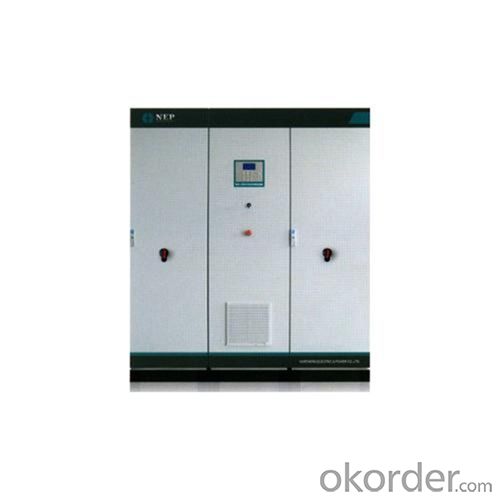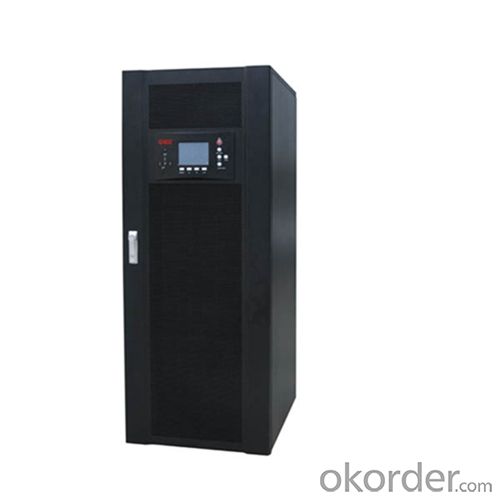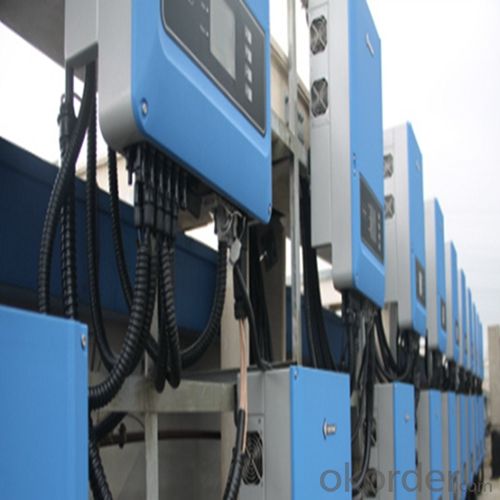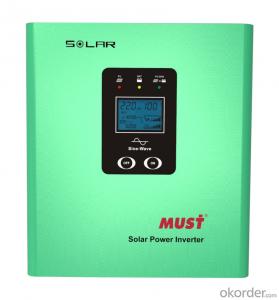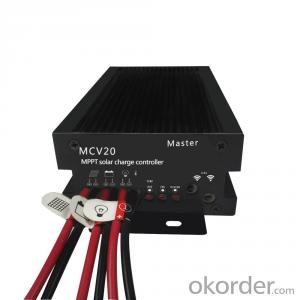Xantrex Solar Inverter - Approved MPPT Solar Charger 3000W 24V
- Loading Port:
- Shanghai
- Payment Terms:
- TT OR LC
- Min Order Qty:
- 5 pc
- Supply Capability:
- 3000 pc/month
OKorder Service Pledge
OKorder Financial Service
You Might Also Like
Performance Characteristics
· 1. Suitable for all electrical equipments
· 2. Large LCD display for more detailed content
· 3. CPU controlled; fast transfer time
· 4. Intelligent battery management, prolonging the service life of the battery
· 5. Complete protection function, high reliability
· 6. Can provide high current charge
· 7. Can match different types of batteries
· 8. Disassembled LCD box which can make the operation in a distance of 15 meters
Product introduction
EP series is sine wave low frequency inverter, which is specifically designed for home appliances. It is equipped with a big LCD screen so all information is displayed in detail, which makes it more convenient to use. Charging current of the inverter is adjustable from 5A to 45A and you can also select different charging voltage to charge different types of batteries so batteries are under great protection.
Our Service
Samples
Samples are Available for Testing and Market Test.
Warranty
We provides warranty against defects in materials and workmanship for its Uninterruptible power supply, Power inverter/chargers including inverter12v 24v 48V, Solar charge controllers (“Product”).
OEM Service
OEM service is strictly based on the ISO9001 ISO14001 quality assurance system. The TOP involves the effective teamwork of departments from Sales, R&D, and Engineering, purchasing, production & QA, assuring a high quality product and prompt delivery for customers. The standardization of our quality system and the quality stability has earned us the trust of our customers for 12 years.
We have 10 sets of automatic insertion equipments, ICT PCB testing equipments, ATE automatic testing center and aging workshop for all products. Monthly output of UPS series exceeds 200,000. We have been offering OEM service for over 12 years.
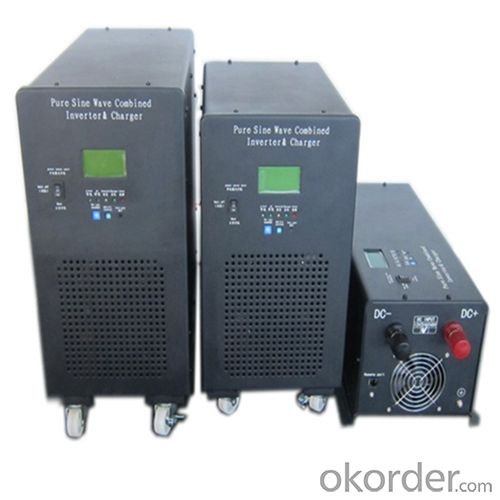
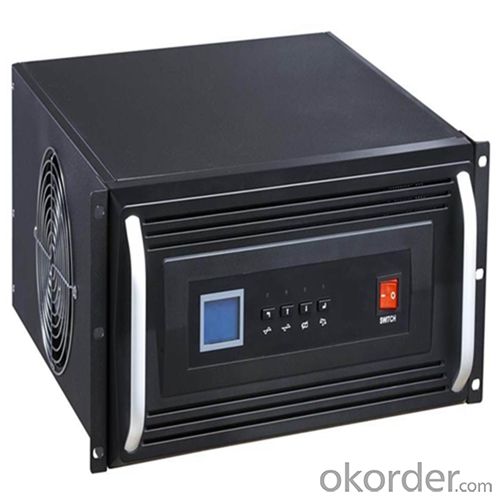
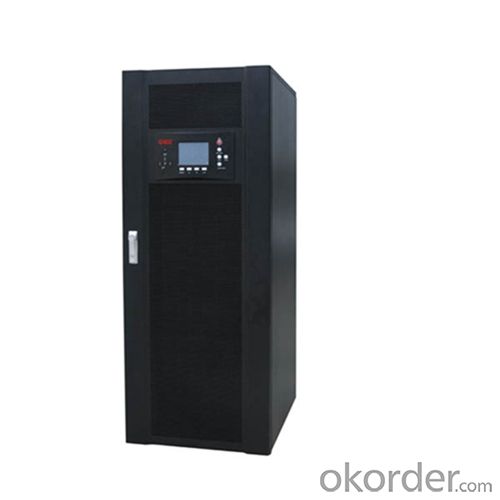
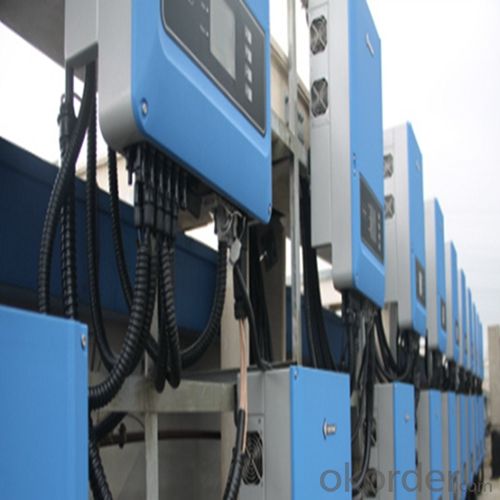
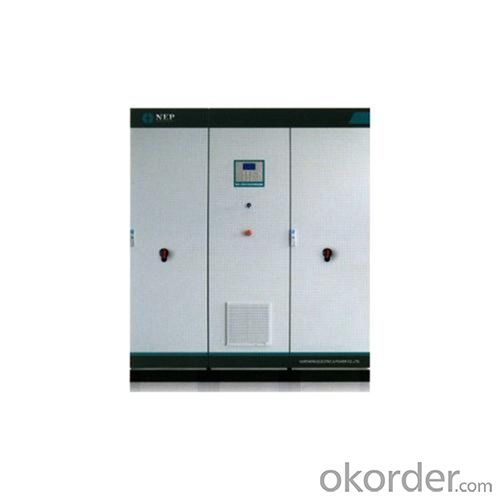
Specifications
Input | |
Input Voltage Range | 182-265VAC |
Output | |
Input Voltage Range | Batt.Mode:50±0.3Hz Mode:48-54Hz(50Hz) or 58-64Hz,Same as AC |
Output Wave Form | Sine Wave (Batt,mode) |
Transfer Time | 10ms(Typical) |
FAQ:
Q: Do you have the CE, TUV, UL Certification?
A: We’ve already passed all the tests, and any certificate is available.
Q: Have you ever sold your products to companies in my country?
A: Of course, we have customers in all general PV markets, but I think we should expand our market share along with the market growth.
Q: When did your company set up? You are a new company, how can I believe your quality?
A: We entered into Solar PV industry in 2005, now we have several plants in manufacturing of a-Si and c-Si panels, and our capacity is 220MW per year. Till now we have already passed all the tests by authorized laboratories, e.g. TUV, CE, UL.
Q: Can you help us install the module if we cooperate with you?
A: We haven’t entered into installation sector, but we have the plan in near future.
Q: How do you pack your products?
A: We have rich experience on how to pack the panels to make sure the safety on shipment when it arrives at the destination.
Q: Can you do OEM for us?
A: Yes, we can.
Q: Can we visit your factory?
A: Surely, I will arrange the trip basing on your business schedule.
- Q: Can a solar inverter be used in systems with multiple solar arrays?
- Yes, a solar inverter can be used in systems with multiple solar arrays. A solar inverter is designed to convert the direct current (DC) produced by solar panels into usable alternating current (AC) for powering electrical devices or feeding back into the grid. It can be connected to multiple solar arrays in parallel or series to increase the overall power output of the system. However, it is important to ensure that the inverter is properly sized and matched to the combined capacity of all the solar arrays to ensure optimal performance and efficiency.
- Q: How long does a solar inverter last?
- A solar inverter typically has a lifespan of around 10 to 15 years, although this can vary depending on various factors such as the quality of the inverter, its usage, and maintenance.
- Q: How does a solar inverter handle shade on solar panels?
- A solar inverter handles shade on solar panels by utilizing a technology called maximum power point tracking (MPPT). MPPT allows the inverter to constantly monitor the output of each individual solar panel and adjust the voltage and current to maximize the power production. When shade is detected on a solar panel, the inverter automatically reduces the power output of the affected panel, ensuring that the shaded area does not significantly impact the overall performance of the system.
- Q: How does the input voltage range affect the performance of a solar inverter?
- The input voltage range of a solar inverter directly impacts its performance. A wider input voltage range allows the inverter to adapt to various solar panel configurations and environmental conditions, maximizing the system's overall efficiency. A limited input voltage range may result in reduced efficiency and output power, as the inverter may not be able to effectively convert the varying voltages produced by the solar panels. Additionally, a wider input voltage range provides flexibility in system design and allows for the incorporation of additional solar panels in the future without the need for significant modifications.
- Q: What is the role of a fault detection system in a solar inverter?
- The role of a fault detection system in a solar inverter is to monitor and identify any issues or malfunctions within the inverter system. It helps to prevent or minimize downtime by quickly detecting faults such as overvoltage, overcurrent, short circuits, or temperature abnormalities. By promptly identifying and alerting the system operator about these faults, the fault detection system allows for timely maintenance or repairs, ensuring optimal performance and safety of the solar inverter.
- Q: How does a solar inverter communicate with monitoring systems?
- A solar inverter communicates with monitoring systems through various means such as wireless technologies like Wi-Fi, Bluetooth, or Zigbee, or through wired connections like Ethernet or RS485. These communication channels allow the inverter to transmit important data and performance metrics to the monitoring systems in real-time.
- Q: What are the main components of a solar inverter system?
- Solar inverter systems consist of several key components, namely solar panels, the inverter itself, and various electrical elements. The primary component of a solar inverter system is the solar panel. These panels are composed of photovoltaic cells that transform sunlight into direct current (DC) electricity. To maximize exposure to sunlight, they are typically installed on rooftops or in open areas. Another crucial component is the inverter, which plays a vital role in converting the DC electricity produced by the solar panels into alternating current (AC) electricity, the type commonly used in homes and businesses. Inverters also regulate the electricity flow, ensuring it aligns with the voltage and frequency of the utility grid. In addition to the solar panels and inverter, other electrical components are present in a solar inverter system. These include wiring, switches, fuses, and circuit breakers, which facilitate the connection of the solar panels, inverter, and other equipment to the electrical grid. Monitoring systems and data loggers are often included as well, providing valuable information on energy production and system performance. Lastly, a solar inverter system may incorporate a battery storage system. This allows surplus electricity generated by the solar panels to be stored for later use, such as during periods of low sunlight or power outages. Battery storage systems are gaining popularity as they offer greater energy independence and the ability to utilize solar energy even when sunlight is scarce. In summary, the main constituents of a solar inverter system encompass solar panels, the inverter, electrical elements, and potentially a battery storage system. Each component has a crucial role in harnessing solar energy and converting it into usable electricity for residential and commercial purposes.
- Q: What is the maximum DC input voltage for a solar inverter?
- The maximum DC input voltage for a solar inverter typically depends on the specific model and manufacturer. However, in general, the maximum DC input voltage for most solar inverters is around 600 to 1000 volts. It is important to consult the product's specifications or contact the manufacturer to determine the exact maximum DC input voltage for a specific solar inverter model.
- Q: Can a solar inverter be used with solar-powered data centers?
- Yes, a solar inverter can be used with solar-powered data centers. A solar inverter is the device that converts the direct current (DC) generated by solar panels into alternating current (AC) electricity that can be used to power electrical devices. By connecting a solar inverter to a solar-powered data center, the generated solar energy can be efficiently utilized to power the data center's electrical infrastructure and equipment. This helps reduce the reliance on traditional energy sources and promotes sustainability in data center operations.
- Q: Can a solar inverter be used with different types of grounding materials?
- Yes, a solar inverter can be used with different types of grounding materials. However, it is important to ensure that the grounding system is compatible with the specific requirements and guidelines provided by the manufacturer of the solar inverter. The grounding materials used should meet the necessary safety standards and provide proper electrical grounding for the solar installation. It is recommended to consult with a qualified electrician or solar professional to determine the appropriate grounding materials for your specific solar inverter and installation.
Send your message to us
Xantrex Solar Inverter - Approved MPPT Solar Charger 3000W 24V
- Loading Port:
- Shanghai
- Payment Terms:
- TT OR LC
- Min Order Qty:
- 5 pc
- Supply Capability:
- 3000 pc/month
OKorder Service Pledge
OKorder Financial Service
Similar products
Hot products
Hot Searches
Related keywords
